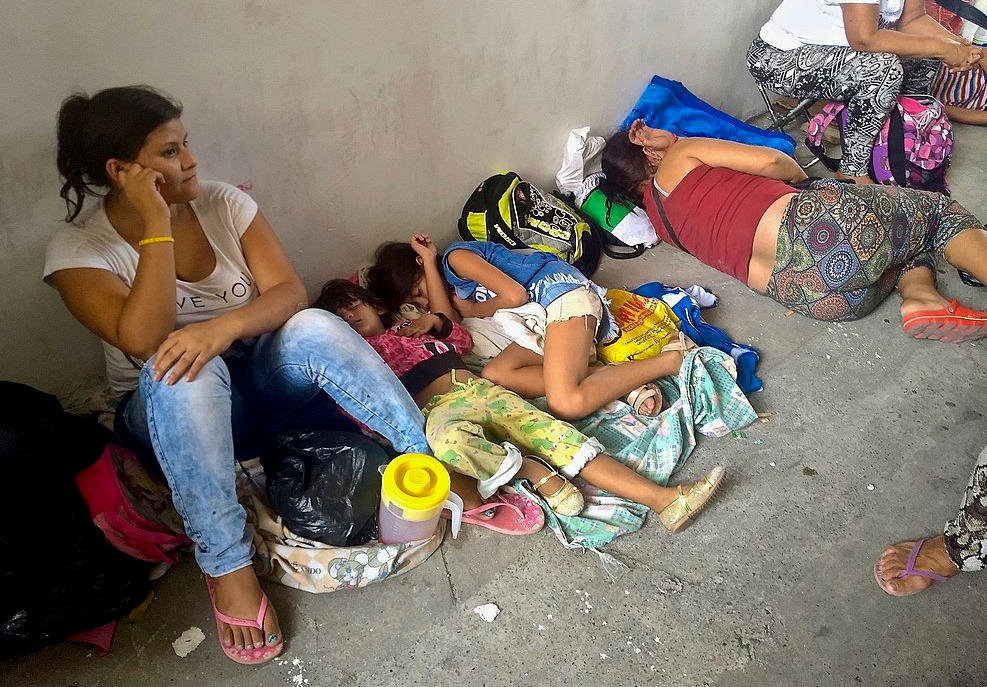CARACAS, Venezuela (ViaNews) - March 7. Another day in the midst of the political crisis in Venezuela. Guaidó and Maduro exchange criticism. Protests for water. Lots of discussion about foreign intervention. Business as usual.

Suddenly, around 5 p.m., lights out.
People start reporting a blackout on Twitter. Whoever you wrote in every corner of the country told you the same: there was no electricity in Venezuela. The lucky ones who can afford an electrical plant start turning them on.
5 days later, Venezuela was not the same.
Many hospitals did not have power plants, or they did not work correctly, which resulted in dozens of dead patients. Long lines to buy ice or salt to preserve food was common. Gasoline was nonexistent in most of the country.
Many states, like Zulia, were entirely ransacked by looting. Gunshots were constantly heard across the city, businesses completely destroyed after looting, products, shelves, and glasses scattered in the streets. The surviving businesses filled with armed security to avoid further looting.
Total anarchy.
Supermarkets, pastry shops, clothing shops, malls. Even hotels and breweries were looted, sometimes with help, or at least passivity from police forces.
Most of the country was in absolute darkness for more than 100 hours, some fortunate states had 2 or 3 hours of power here and there.
The cause? As usual, according to Maduro, sabotage.
We have previously reported here on Via News some of the causes of the electrical crisis, and as far as we can tell, nothing has been resolved. The results are evident.
“There was a short-circuit in transmission lines that go from the Guri hydroelectric, the biggest source of energy in Venezuela, to the Malena substation due to a fire that overheated three lines." Andrés González, engineer, and member of Politics, a political analysis think-tank.
“As Guri is responsible for providing the 80 % of electrical energy in the country, the National Electrical System collapsed. A few cities had electricity, but unstable, because they receive power from thermoelectric plants."
The country tried to recover normality. But again, a couple of weeks later, on March 25, a new blackout occurred. In most of the country, this blackout lasted 3 days, but in some cities, like certain parts of Maracaibo, the third blackout came after 2 or 3 hours of electricity on March 28.
A few hours later, the power came back in some areas of Caracas and went off again. The following day most of the country had electricity around 5 p.m.
Only to have a new blackout an hour later.
On April 1, the service was restored in most of the country and Nicolás Maduro announced power cuts for the next 30 days.
As of today, there are still parts of states like Zulia or Cojedes that have received somewhere between 3 hours and 10 hours of electricity in the last 7 days and the states that have the power restored are suffering from 10 or 12-hour power cuts.
The consequences have been profound. Oil production fell under a million barrels per day, which is the lowest number since 2003 when Venezuela was in the middle of an oil strike. Protest arose throughout the country resulting in 47 detentions, according to Foro Penal, an NGO dedicated to assisting political prisoners in Venezuela.
The foreseeable future? More blackouts. Maduro dismissed Electricity Minister, Luis Motta Domínguez, and appointed Igor Gaviria as the new minister, but the change seems to be purely apparent.
The situation has not an easy solution and the country will face the months that usually have the highest power consumption. Maduro's aides insist on the sabotage theory and they have not made serious efforts to find solutions for the issue or to accept the gravity of the crisis. Rough days for Venezuela.

